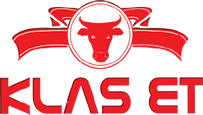Its mass is used to calculate the concentration or amount of the assayed substance in the analyte. Classical qualitative analyses can be complex owing to the large number of possible chemical species in the mixture. Fortunately, analytical schemes have been carefully worked out for all the common inorganic ions and organic functional groups.
- Our hope here is to establish a distinction between what kinds of data analysis exist, and the various ways it’s used.
- Data Analytics is the process of collecting, cleaning, sorting, and processing raw data to extract relevant and valuable information to help businesses.
- While that may not seem like much, considering the amount of digital information we have at our fingertips, half a percent still accounts for a vast amount of data.
- During this period, significant contributions to analytical chemistry included the development of systematic elemental analysis by Justus von Liebig and systematized organic analysis based on the specific reactions of functional groups.
What will your profit be if you only make 12,000 sales and hire five new employees? The Monte Carlo method is one of the most popular techniques for calculating the effect of unpredictable variables on a specific output variable, making it ideal for risk analysis. Analytical chemistry consists of classical, wet chemical methods and modern, instrumental methods. Classical qualitative methods use separations such as precipitation, extraction, and distillation.
What is Data Analysis: Types of Data Analysis
Regression analysis was introduced in Section 6.4.4 and the construction of a calibration graph was given as an example. The same example is taken up here but focused somewhat more on the application. If calibration is involved in an analytical procedure, the SOP for this should include a description of the calibration sub-procedure. Inductive reasoning test – you’ll need to identify relationships between statements, images or facts and figures, and use this analysis to show, logically, what should come next.
The first is that a testing problem is reduced from a large problem into various test cases where the count of the test cases is easily manageable. The testing strategy document includes the roles and responsibilities of the testing team resources. Therefore, it needs to be aligned with the test policy of the organization. Test strategy is an organizational document that outlines the general test approach, that is, what needs to be achieved and how to achieve it.
Customer Stories
Quantitative analysis is the measurement of the quantities of particular chemical constituents present in a substance. There are numerous qualitative chemical tests, for example, the acid test for gold and the Kastle-Meyer test for the presence of blood. Formally confirming that your products and services meet all trusted external and internal standards. Validating the specifications, value and safety of your raw materials, products and assets. Use our test analytics to make timely enhancements to remain ahead of your competitors.
This is particularly true in industrial quality assurance , forensic and environmental applications. Get more from your survey results with tried and trusted statistical tests and analysis methods. The kind of data analysis you choose depends on your survey data, so it makes sense to understand as many statistical analysis options as possible. A large percentage of risk-based testing techniques execute a combination of methods to leverage the risk level for deciding the sequence or priority of the tests. Through this process, the testing team verifies that a large percentage of defects are detected during the process of test execution and that a majority of the necessary parts of the product are included. To execute risk-based testing, the team can select from various testing techniques.
These methods can be categorized according to which aspects of the cell are controlled and which are measured. The four main categories are potentiometry , coulometry , amperometry (the cell’s current is measured over time), and voltammetry (the cell’s current is measured while actively altering the http://lovellmaine.us/2017/03/ cell’s potential). The separation sciences follow a similar time line of development and also became increasingly transformed into high performance instruments. In the 1970s many of these techniques began to be used together as hybrid techniques to achieve a complete characterization of samples.
The team that handles the identification and assessment phases consist of resources from all stakeholder groups. This implies that the resources are from the Product Development team or the entire project team. In real-life scenarios, a few stakeholders accept the responsibility of standing for some additional stakeholders. In this section of the analytical test strategy tutorial, we will look into the different phases of RBT. Before exploring the analytical test strategy, let’s begin with a brief overview of the test strategy.
Before diving into the 17 essential types of methods, it is important that we go over really fast through the main analysis categories. Starting with the category of descriptive up to prescriptive analysis, the complexity and effort of data evaluation increases, but also the added value for the company. With so much data and so little time, knowing how to collect, curate, organize, and make sense of all of this potentially business-boosting information can be a minefield – but online data analysis is the solution. Grouping methods are techniques for classifying observations into meaningful categories. Two of the most common grouping methods are discriminant analysis and cluster analysis.
Type of regression analysis, you’re looking to see if there’s a correlation between a dependent variable (that’s the variable or outcome you want to measure or predict) and any number of independent variables . The aim of regression analysis is to estimate how one or more variables might impact the dependent variable, in order to identify trends and patterns. This is especially useful for making predictions and forecasting future trends. Temperature is a factor which is particularly difficult to control in some laboratories or sometimes needlessly controlled at high costs simply because it is prescribed in the original method . The very recently published standard procedure for determining the particle-size distribution has not been validated in an interlaboratory trial.

